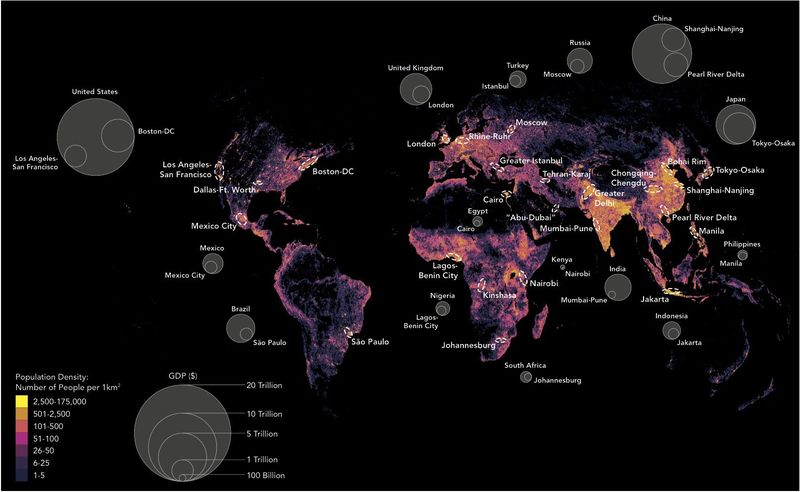By 2030, more than 70 percent of people will live in cities. In many respects, these cities matter a lot more than the countries that they’re in.
Mega-city clusters will dominate the world economy. In many countries, the capital city or financial center often represents up to half or more of the national GDP. By 2030, we could have as many as 50 such urban hubs anchoring the global system.
What does this map tell us?

Parag Khanna via Washington Post.
This map attempts to accurately represent not only where people will be, but also the economic value of what they will do. It looks at the entire world’s population and plots it by density, and then superimposes the largest urban archipelagos, the mega-cities, with those ovals to show the value of those cities vis-à-vis the national economy.
It isn't as hard to predict as you might guess. To predict the number of 18-year-olds in fifteen years, start with the number of 3-year-olds now.
Kind of scary?
There is opportunity in knowledge.

Leave a Reply